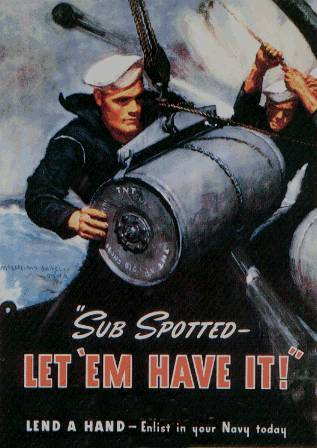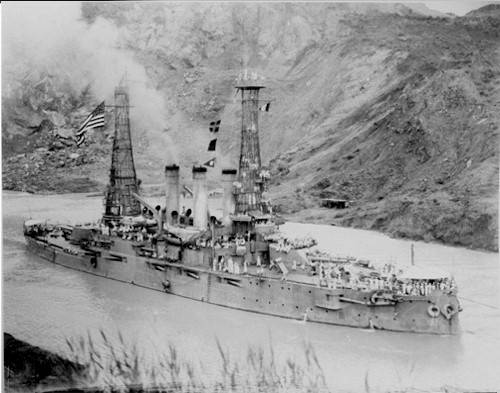|
Water Survival Training

|
|
|
Do you remember survival in the pool?
When I went through Boot Camp at Great Lakes we performed the different methods of staying a float by using every piece of the working uniform (Dungarees). Yes we took off our trousers and knotted the legs and then brought them overhead to trap some air and use them as water wings. The secret was keeping the surface of the trousers wet like watching a duck as he maintains his waterproofing by shaking his little body and reshuffling his feathers. Even the white hat could be used to keep a person a float. It was all part of learning water survival.
Later when I went through Fort Sherman Water Survival course in Panama we used a zodiac boat with all our equipment. The object besides staying afloat as a team was not to lose any of your equipment when the Special Forces Sergeant flipped the boat over with all your equipment and you found yourself in the water in the middle of Lemon Bay. If the wind was right and everybody working together you could flip the boat over again and have everybody pile back into it exhausted. But with an ebb tide everybody had to hit the paddles or we would be gator food in one quick hurry.
Now in Cocoli Troop 13, the Boy Scouts did some water safety at Rodman pool. But the last thing you wanted to do was to lose your head when you are in water over your head. There were life rings, poles and actually getting in the water to help a distress swimmer.
At sea with my Uncle Sam the dreaded alarm was "Man-overboard!" See the side Oscar went over was the side the ship turn the helm completely to the stops for you wanted to be sure that the man or Oscar the dummy didn't get chewed up in the stern screws. Yes, we practice that maneuver often and it happened that we saved a fellow shipmate who got blown off during high speed maneuvering to take station behind the carrier in a battle group when it was launching planes.
Now I can recall that in any tight spot the instructor or the NCOIC or the Team Leader always said, "Keep your cool. Don't panic! We can get through this okay even if you find yourself in the water all alone… you will survive!"

Some Selected Navy Savings:
"Without a decisive naval force we can do nothing definitive, and with it, everything honorable and glorious." --- President George Washington, 15 November 1781, to Marquis de Lafayette.
"Don't give up the ship!"
Tradition has it that Captain James Lawrence said these heroic words after being mortally wounded in the engagement between his ship, the U.S. frigate Chesapeake, and HMS Shannon on 1 June 1813. As the wounded Lawrence was carried below, he ordered, "Tell the men to fire faster! Don't give up the ship!"
Although Chesapeake was forced to surrender, Captain Lawrence's words lived on as a rallying cry during the war. Oliver Hazard Perry honored his dead friend Lawrence when he had the motto sewn onto the private battle flag flown during the Battle of Lake Erie, 10 September 1813. (William S. Dudley, ed., The Naval War of 1812: A Documentary History
[Washington, D.C.: Naval Historical Center, 1992]
"We have met the enemy and they are ours..."
Oliver Hazard Perry's immortal dispatch to Major General William Henry Harrison after the Battle of Lake Erie, 10 September 1813, "We have met the enemy and they are ours-- two ships, two brigs, one schooner and one sloop." The victory secured the Great Lakes region for the United States and ended the threat of invasion from that quarter.(William S. Dudley, ed., The Naval War of 1812: A Documentary History [Washington, D.C.: Naval Historical Center, 1992]
|

|
"Damn the torpedoes, Full speed ahead!"
Then Admiral David Glasgow Farragut (1801-1870) aboard Hartford, Farragut entered Mobile Bay, Alabama, 5 August 1864, in two columns, with armored monitors leading and a fleet of wooden ships following. When a mine demolished the lead monitor Tecumseh, the wooden ship Brooklyn stopped, and the line drifted in confusion toward Fort Morgan. As disaster seemed imminent, Farragut gave the orders embodied by these famous words. He swung his own ship clear and headed across the mines, which failed to explode. The fleet followed and anchored above the forts, which, now isolated, surrendered one by one. The torpedoes to which Farragut and his contemporaries referred would today be described as tethered mines.
"You may fire when ready, Gridley."
Commodore George Dewey, 1 May 1898, at the Battle of Manila Bay during the Spanish-American War. The American squadron entered Manila Bay and took fire from the Spanish fleet, anchored under the guns of Cavite, for half an hour until in the position Dewey wanted. Then Dewey addressed his order to Charles Gridley, captain of Dewey's flagship Olympia.
"A good Navy is not a provocation to war. It is the surest guaranty of peace."
President Theodore Roosevelt, 2 December 1902, second annual message to Congress.
|

|
"A powerful Navy we have always regarded as our proper and natural means of defense; and it has always been of defense that we have thought, never of aggression or of conquest. But who shall tell us now what sort of Navy to build? We shall take leave to be strong upon the seas, in the future as in the past; and there will be no thought of offense or provocation in that. Our ships are our natural bulwarks." President Woodrow Wilson, 8 December 1914, address to joint session of Congress.
|

|
"Sighted Sub, Sank Same."
Message sent by an enlisted pilot, AMM 1/c Donald Francis Mason, on 28 January 1942. Mason believed that he had sunk a German U-boat off Argentia, Newfoundland.
"Take her down!"
Commander Howard Walter Gilmore, desperately wounded and unable to climb back into his submarine, USS Growler (SS-215), in the face of an approaching Japanese gunboat 7 February 1943.
|

|
"The battle of Iwo Jima has been won. Among the Americans who served on Iwo, uncommon valor was a common virtue."--- Fleet Admiral Chester W. Nimitz, 17 March 1945, CINCPAC Communiqué No. 300
"The Navy has both a tradition and a future--and we look with pride and confidence in both directions."
--- Admiral George Anderson, CNO, 1 August 1961.
"Events of October 1962 indicated, as they had all through history, that control of the sea means security. Control of the seas can mean peace. Control of the seas can mean victory. The United States must control the seas if it is to protect your security...."
--- President John F. Kennedy, 6 June 1963, on board USS Kitty Hawk.
|

|
|
"I can imagine no more rewarding a career. And any man who may be asked in this century what he did to make his life worthwhile, I think can respond with a good deal of pride and satisfaction: 'I served in the United States Navy.'"
---- President John F. Kennedy, 1 August 1963, in Bancroft Hall at the U. S. Naval Academy. (Public Papers of the Presidents of the United States: John F. Kennedy, Containing the Public Messages, Speeches, and Statements of the President, January 1 to November 22, 1963 [Washington: Government Printing Office, 1964]
|

The country of Panama is located just 9 degrees above the Equator. It is a lost paradise of enchantment. It is a place dreams and fabulous memories. You can be part of it all...Come to Panama... it is more than a canal.
|
|
|



Picture credits: Author, US Navy archives, Naval Historical Society, Rodman NB, archives
|
| | | |
